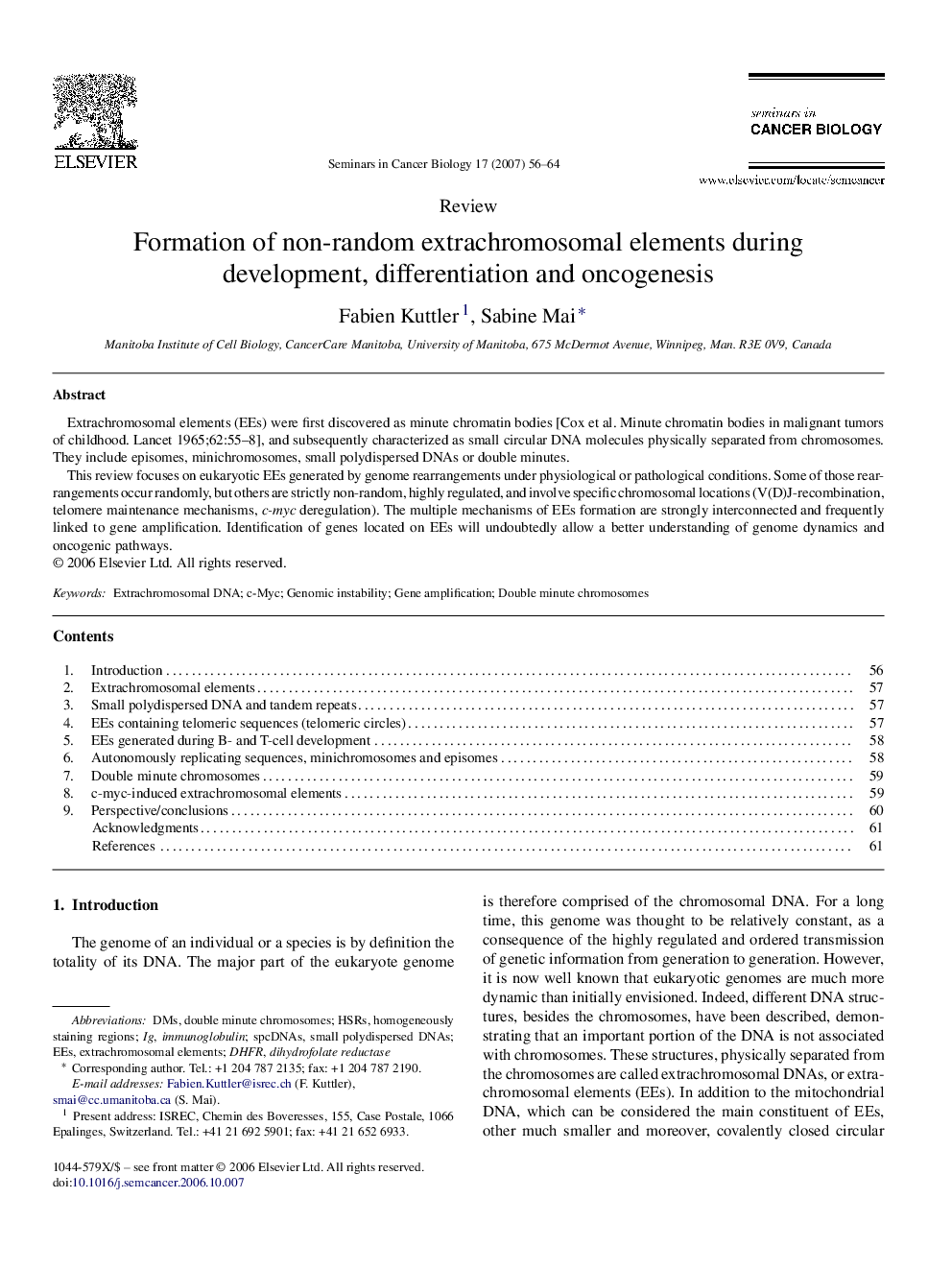| Article ID | Journal | Published Year | Pages | File Type |
|---|---|---|---|---|
| 2024218 | Seminars in Cancer Biology | 2007 | 9 Pages |
Extrachromosomal elements (EEs) were first discovered as minute chromatin bodies [Cox et al. Minute chromatin bodies in malignant tumors of childhood. Lancet 1965;62:55–8], and subsequently characterized as small circular DNA molecules physically separated from chromosomes. They include episomes, minichromosomes, small polydispersed DNAs or double minutes.This review focuses on eukaryotic EEs generated by genome rearrangements under physiological or pathological conditions. Some of those rearrangements occur randomly, but others are strictly non-random, highly regulated, and involve specific chromosomal locations (V(D)J-recombination, telomere maintenance mechanisms, c-myc deregulation). The multiple mechanisms of EEs formation are strongly interconnected and frequently linked to gene amplification. Identification of genes located on EEs will undoubtedly allow a better understanding of genome dynamics and oncogenic pathways.
